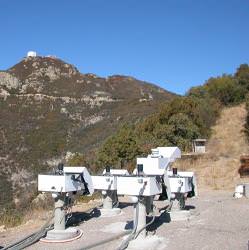It’s been a week of planetary discoveries. Here’s another. This latest find announced by the Harvard-Smithsonian Center for Astrophysics (CfA) is the most massive planet ever discovered. This gas giant, named HAT-P-2b, weighs in at 8 times the mass of Jupiter.
HAT-P-2b was discovered using the transit method. In other words, it was discovered because it dims the light from its parent star as it passes in front. Astronomers have calculated that it has a very unusual elliptical orbit, getting as close as 5 million km (3.1 million miles) and then swinging out to 15 million km (9.6 million miles). But this journey only takes 5.63 days.
As planets go, this is a strange one. It has 8.2 times the mass of Jupiter, but it’s only 1.18 times the size of Jupiter. It has roughly the density of the Earth, but it’s made up almost entirely of hydrogen. In fact, it’s right at the boundary between planet and star. With only another 50% more mass, it would have begun nuclear fusion.
The discovery was made using a network of small, automated telescopes called HATNet. There are a total of six telescopes; four at the Whipple Observatory in Arizona, and two more in Hawaii. These robotic telescopes make 26,000 observations every night, searching for stars that dip in brightness on a regular basis.
Original Source: CfA News Release

